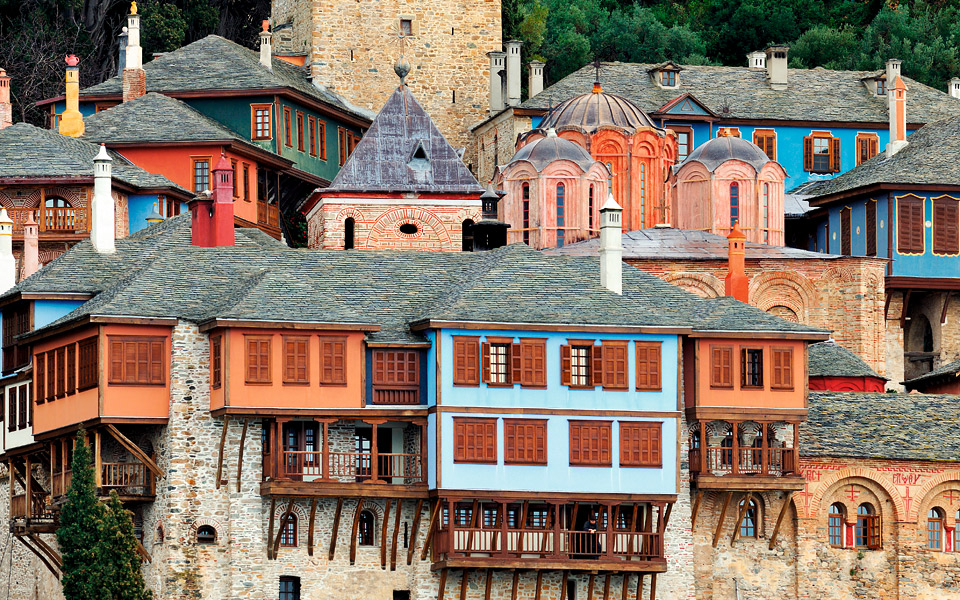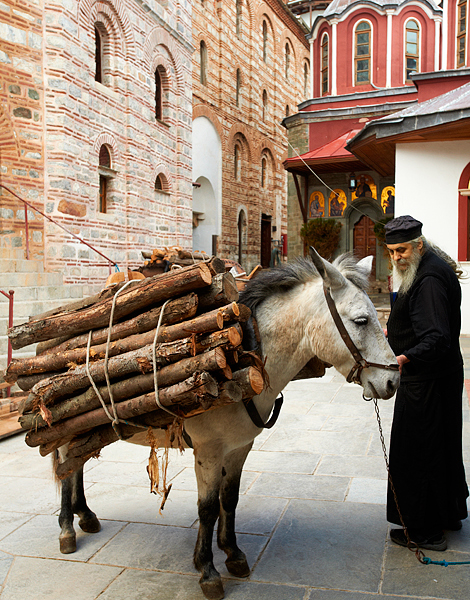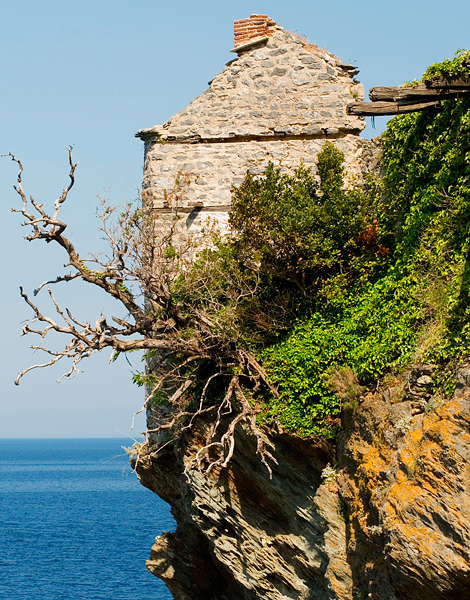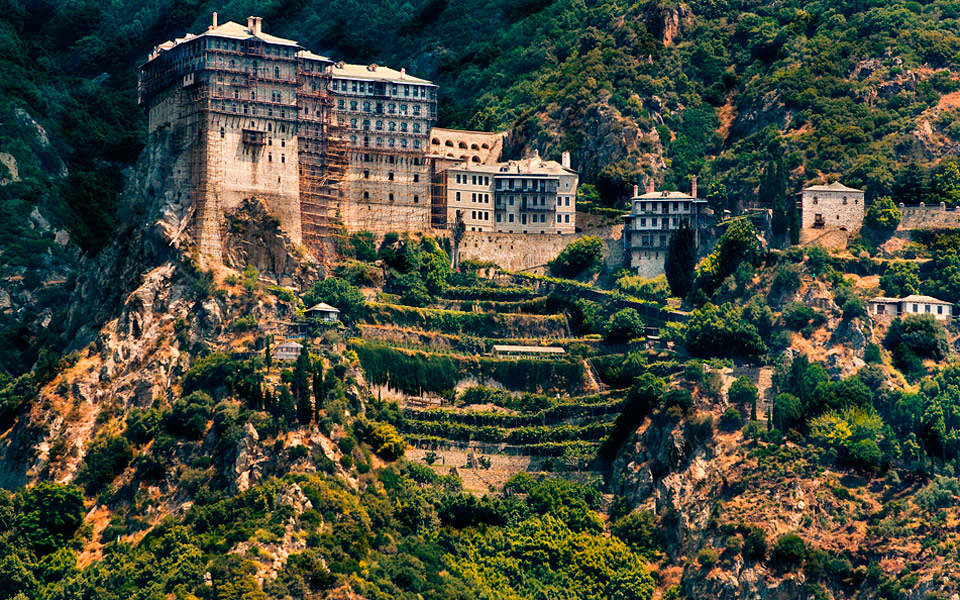Restaurant Road Trips in Central Macedonia, Summer Edition
A summer road trip through Central...

The picturesque Monastery of Athos mountain with access limited to males only.
Any reference to the monastic community of Athos usually conjures all sorts of impressions, but whatever you may have in mind, it’s probably a far cry from the actual experience of visiting the third “leg” of Halkidiki. Even though it just a few hours’ drive from Thessaloniki and in close proximity to the tourism hot spots of Halkidiki’s other two legs, this is an entirely different world. A UNESCO World Heritage site, this autonomous polity has survived unscathed and without a break since the late 8th century, when the first monks settled here and construction began on the first monastery, Megisti (Great) Lavra, in 961 AD.
The sight is impressive as it unfolds on the approach to the peninsula’s southwestern coast, with Ouranoupoli and the Prosforio Tower behind you. It is clear from the view of the monasteries, the sketes (smaller monasteries) and farmhouses, why Mount Athos has been called an ark. Indeed, it is a cultural treasury worth exploring, but unfortunately the privilege is afforded only to men. Boats will take you to one of the small harbors, known as arsana, or to Karyes, the port “capital” of Athos.
Athos’ nickname, the “Virgin’s garden,” is also well deserved as you will see from the pristine natural landscape.

Bringing firewood for the winter at Aghios Dionysios Monastery
© Shutterstock

One of the "arsanas" or small harbors.

The holy "Simonos Petra" monastery.
Most importantly, you will meet remarkable people who have dedicated their lives to God and organized their life with wisdom and simplicity: educated people, often with degrees from the world’s finest universities, who have turned day into night, living according to a regimented program. They wake up at 2 a.m. and spend one-third of the day in prayer and another third on chores outside the monastery, such as chopping firewood, farming or cooking, or on tasks inside the monastery and on handicrafts, producing everything from ornate icons to fine wines. The final third of the day is dedicated to rest.
The architecture is also quite stunning, especially since it has survived for over 10 centuries. The monasteries are vast complexes with impressive churches, towers, aqueducts, reception areas known as archontarikia, dining halls (trapezes), cells and kitchens. Among the most noteworthy of these are Simonopetra, a spectacular edifice clinging to the tip of a sheer rock; Aghios Panteliemonas, with its distinctive green rooftops; the fortress-like Iviron and, at the top of the hierarchy, the grandiose monasteries of Megistis Lavras and Vatopedi.
Take the time to peruse the frescos, icons and ornamentation in the churches, the cases guarding centuries-old heirlooms of ecclesiastical art, the old books, illustrated manuscripts and wood sculptures.
Like every ark, Mount Athos is a place of discovery, for the religious and non-religious alike. And this is a part of the spiritual experience that is offered by the place and the people who appear to exist only to worship the divine in one of the holiest sites of Christianity.
“Like every ark, Mount Athos is a place of discovery, for the religious and non-religious alike”
A summer road trip through Central...
Keepers of stillness and prayer in...